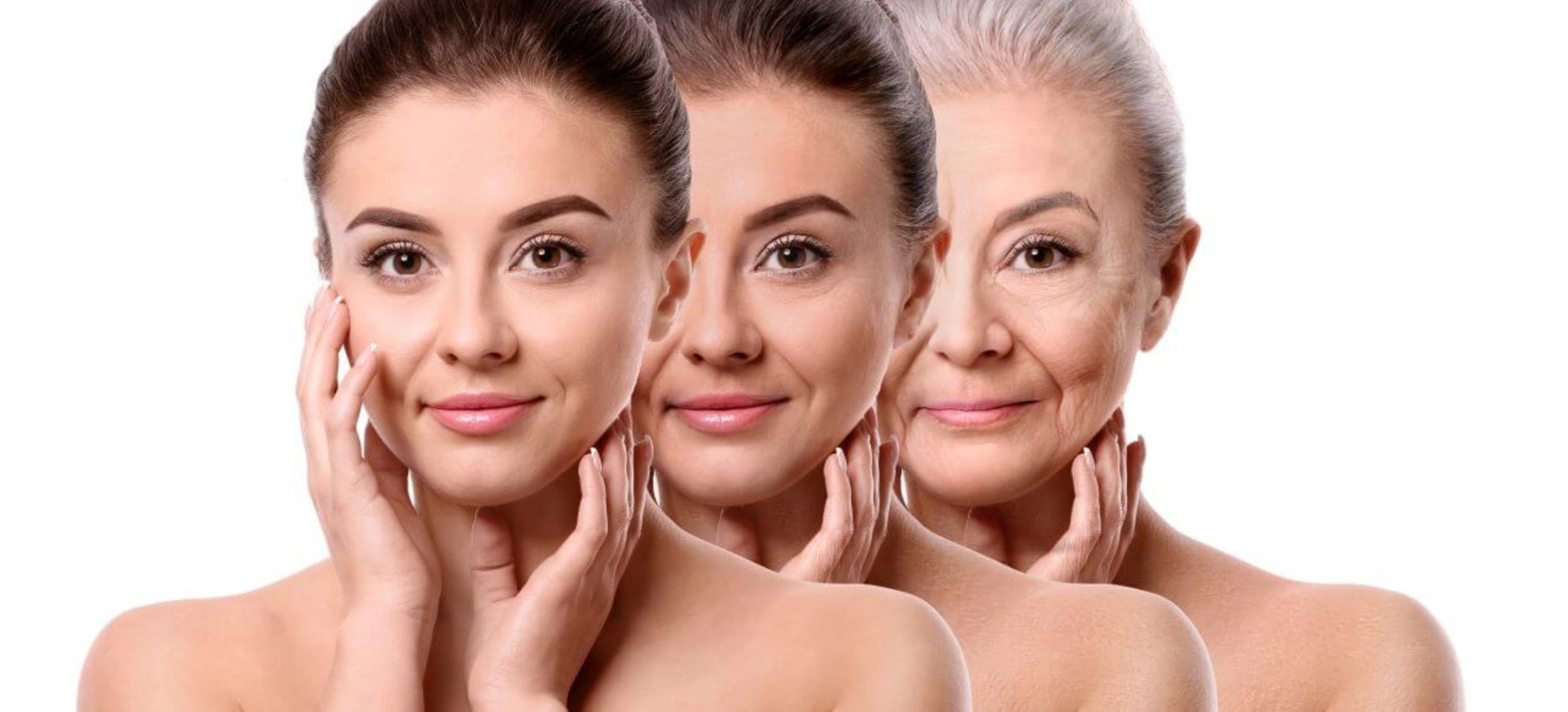
How Age Affects the Skin: The Aging Process and Your Skin
Aging is an inevitable process that impacts every part of the body, and the skin is no exception. As the largest organ of the human body, the skin undergoes various transformations as we grow older. From fine lines to pigmentation changes, understanding how age affects the skin can help in choosing the best skin care for aging skin.
Changes in Skin Structure with Age
Aging brings about distinct changes to the structure and functionality of the skin. These changes are the result of both internal processes and external influences, such as lifestyle and environmental factors.
Collagen and Elasticity Loss
One of the most significant impacts of aging on the skin is the gradual reduction in collagen production. Collagen, the protein responsible for the skin’s firmness and elasticity, diminishes over time. This decline leads to sagging and a lack of resilience, contributing to the appearance of aging skin. Elastic fibers also degrade, making it harder for the skin to return to its original shape after stretching.
Skin Thinning and Fragility
As we age, the dermis—the thicker, supportive layer of the skin—becomes thinner. This thinning reduces the skin’s ability to protect itself from damage, making it more prone to bruising and injury. Additionally, the epidermis, or outermost layer, becomes less effective at retaining moisture and shielding the skin from environmental stressors.
Dryness and Moisture Loss
With age, the skin’s ability to produce natural oils decreases, often leading to dryness. This dryness is compounded by the reduced effectiveness of the skin’s lipid barrier, which is essential for retaining moisture. The result is skin that feels tight, rough, and dehydrated.
Fine Lines and Wrinkles
Fine lines are often the earliest visible signs of aging, appearing in areas where repetitive facial movements, like smiling or frowning, occur. Over time, these fine lines may deepen and evolve into wrinkles, particularly on the forehead, around the eyes, and near the mouth. The progressive loss of collagen and elastin compounds these changes, leading to more pronounced signs of aging. To address these concerns, treatments such as the best wrinkle filler and Botox for fine lines and wrinkles are widely sought after for their effectiveness in smoothing the skin and restoring a youthful appearance.
Pigmentation and Age Spots
Exposure to the sun over the years can cause the development of age spots, also known as liver spots. These are areas of hyperpigmentation that commonly appear on parts of the body frequently exposed to the sun, such as the face, hands, and arms. While these spots are harmless, they can make the skin appear older and uneven.
Factors That Accelerate Skin Aging
Although aging is a natural process, certain factors can accelerate its effects on the skin. Prolonged sun exposure is a primary culprit, as ultraviolet (UV) rays break down collagen and elastin fibers. Smoking, stress, and inadequate hydration also play significant roles in hastening the aging process. Additionally, poor skin care habits and the lack of using products designed for aging skin can exacerbate the visible signs of aging.
Signs of Aging Skin in Different Life Stages
The aging process manifests differently across decades, with distinct characteristics in each stage of life. In the 20s and 30s, early fine lines may begin to appear, particularly around the eyes. A slight decrease in skin elasticity becomes noticeable, though the overall tone remains vibrant. By the 40s and 50s, wrinkles become more prominent, and uneven skin tone may develop due to cumulative sun exposure and hormonal changes. In the 60s and beyond, the effects of aging become more pronounced, with increased skin thinning, dryness, and noticeable age spots becoming common.
How to Protect Your Skin from Premature Aging?
Preventing premature aging requires a proactive approach to skin care and aging. Regular use of sunscreen with high SPF levels is essential to shield the skin from harmful UV rays. Incorporating antioxidants, such as vitamin C, into your skincare routine can neutralize free radicals that damage the skin. Hydrating the skin with moisturizers designed for aging skin helps maintain a healthy moisture barrier, while gentle exfoliation can encourage cell turnover. The best skin care for aging skin includes products that are specifically formulated to target the signs of aging.
When to Consider Skincare Products or Treatments for Aging Skin
For individuals noticing the initial signs of aging, such as fine lines or dryness, investing in high-quality skincare products can yield significant results. Retinoids, peptides, and hyaluronic acid are common ingredients that support skin renewal and hydration. For deeper wrinkles or significant loss of volume, professional treatments like dermal fillers and Botox for fine lines and wrinkles can provide noticeable improvements.
Using Dermal Fillers to Address Aging Signs
Dermal fillers have emerged as one of the most effective treatments for addressing the signs of aging. These injectable substances restore lost volume, smooth wrinkles, and rejuvenate the skin’s appearance.
How Does Dermal Filler Work?
Dermal fillers are designed to plump up areas of the skin that have lost volume due to aging. Composed of materials like hyaluronic acid, they attract and retain moisture, restoring fullness to the skin and smoothing out lines.
Benefits of Dermal Fillers for Aging Skin
The benefits of dermal fillers extend beyond wrinkle reduction. They can contour the face, enhance facial symmetry, and restore a youthful appearance. Additionally, the results are typically immediate, making them a popular choice for those seeking a quick and effective solution to aging skin.
Types of Dermal Fillers
There are various types of dermal fillers available, each tailored to specific needs. Hyaluronic acid fillers are ideal for hydration and volume restoration, while collagen-stimulating fillers encourage the skin to produce its own collagen over time. Your dermatologist can recommend the best wrinkle filler for your individual concerns.
What to Expect During and After Treatment
Dermal filler treatments are minimally invasive and typically take less than an hour to complete. Patients may experience mild swelling or redness immediately after the procedure, but these effects usually subside within a day or two. The results can last anywhere from six months to over a year, depending on the type of filler used.
FAQ
As we age, the skin undergoes several changes, including collagen loss, thinning, increased dryness, and the appearance of fine lines and age spots.
Skin becomes thinner due to a reduction in collagen and elastin, which weakens the dermal layer and makes the skin more prone to damage.
Collagen provides structural support and elasticity to the skin. Its decline with age leads to sagging, wrinkles, and reduced firmness.
Sun exposure accelerates skin aging by breaking down collagen and elastin fibers, causing pigmentation changes and making wrinkles more pronounced.
Fine lines often begin to appear in the late 20s to early 30s, becoming more prominent in the 40s and beyond.
While it is not possible to completely reverse aging, treatments such as the best wrinkle treatment for the forehead, dermal fillers, and high-quality skincare products can significantly reduce its appearance
Categories
Company
Media
Follow Us
© Copyright Biotech /Terms Of Use - Privacy Policy
Version 2_CT_1212222
